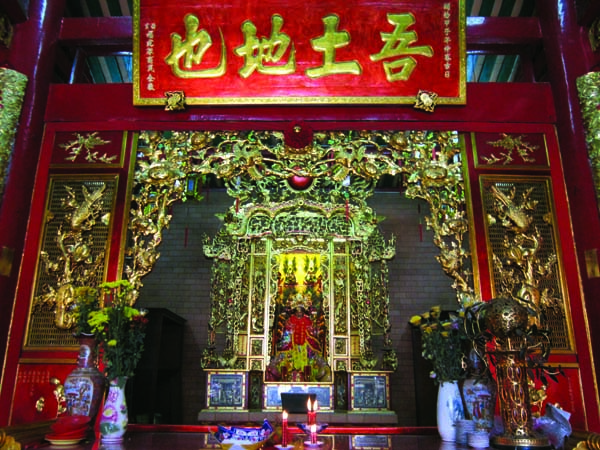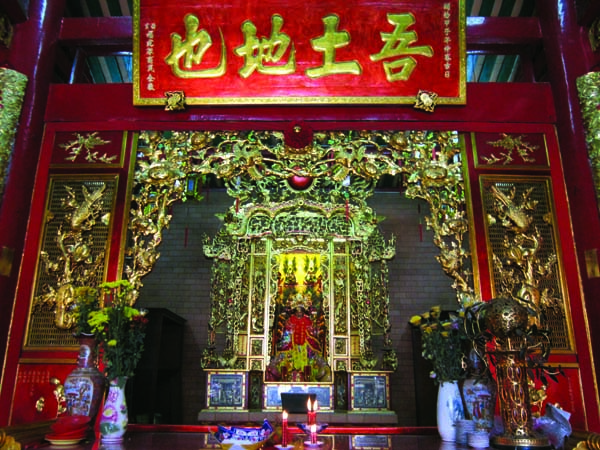(No.6, Vol.7,Dec 2017-Jan 2018 Vietnam Heritage Magazine)

The statue of Chief Lord of Morality and Fortune

A procession marching to the shrine

People offering incense to the lord
Among the deities worshipped by the Chinese in Ho Chi Minh City, perhaps the Chief Lord of Morality and Fortune is the most revered and followed. This god is the guardian of land, and protector of ‘safe residence and prosperous business’ of the Chinese community in the new home land. So, all Chinese worship him. Whether for a sick kin, a child facing an exam, a marrying daughter, a son joining the army, or in cases of losses and accidents, for every matter they come to the Chief Lord of Morality and Fortune, begging for peace and good fortune. Builders of houses, roads, bridges, hotels and offices, pray and consecrate to him every time they break the ground for a new construction in hopes that the work will be smooth, people safe and the structures strong.
In Ho Chi Minh City, the oldest and biggest shrine of Chief Lord of Morality and Fortune is the Nhi Phu shrine in District 5, also called shrine of Lord Bon. The shrine holds the votive tablets of ‘Great Ba Cong’. According to a member of the managing board of the shrine, Great Ba Cong, or the Chief Lord of Morality and Fortune, is actually Chau Dat Quan, a real historical figure of China.
The wooden 1.5m high statue of Chief Lord of Morality and Fortune resides in the main compartment of the shrine. The Lord sits on a throne, one hand on the chair and the other stroking his beard. The side compartments are dedicated to Lord Quang Trach and Lord Thai Tue.
The Chief Lord of Morality and Fortune is celebrated on the 15th day of the 1st and 8th lunar months, believed to be his birthday and the day he died. The biggest festivities take place on the 15th of the 1st lunar month.
Early in the morning on the day of the main events, offerings get readied and offered to the Lord of Land. These include a goat and a pig (already gutted and cleaned), a roasted pig, two boiled chickens and a pair of boiled ducks, fishes, stuffed buns, fruits and flowers, votive money and dresses and three cups of tea and three glasses of wine, all beautifully arranged on the altar.
The incense offering ritual of the managing board lasts about 10 minutes. After that, the offerings are quickly moved to the kitchen to get prepared to treat visitors. A band with old instruments, drums and bells begins playing, making the atmosphere warm, happy and unifying.
At about 10-11 a.m., Phu Nhi shrine becomes even more boisterous as a procession heads in to kowtow to the Lords. There is always such a procession on both the 15th day of the 1st and 8th lunar months. Hundreds of people march on the streets from Chau Van Liem to Lord Bon shrine, carrying many typical cultural attributes of the community.
The rest of the time, from the afternoon till night, the managing board receives visitors who come to make offerings, and worship and meet up with people. In the clubhouse courtyard, they conduct rituals and prayers to heaven and earth, and artists perform a lion dance, songs and dances, variety shows, attracting tens of thousands of enthusiasts and onlookers.

